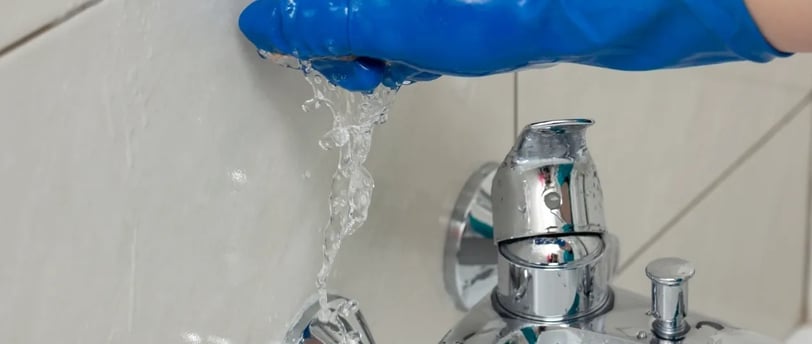How to remove and prevent limescale
8/28/20232 min read


What is Limescale?
Limescale is a type of mineral deposit that forms on surfaces exposed to hard water. It can be difficult to remove and can lead to a buildup of bacteria if not treated properly.
Limescale occurs when calcium and magnesium ions in the water combine with organic matter such as soap scum, oils or dirt in your pipes. This creates limescale crystals which then build up on your taps, shower heads and other household appliances such as washing machines or dishwashers.
How to Remove Limescale
If you're dealing with limescale, there are a few things you can do:
Use a limescale remover such as vinegar or citric acid. For tougher deposits, you may need to use a chemical limescale remover. Use a soft cloth or sponge to scrub the surface and then rinse with clean water. For stubborn deposits, use a limescale brush or an old toothbrush to scrub away the limescale
Preventing Limescale Buildup
Install a water softener or water filter system to reduce the amount of minerals in your water.
Clean surfaces regularly with a limescale remover.
Use a squeegee or other tool to remove excess water from surfaces after showering or bathing.
Run hot water through your taps every week to help prevent limescale buildup.
Limescale Prevention Tips
Clean surfaces regularly with a limescale remover.
Install a water softener or water filter system.
Use a squeegee or other tool to remove excess water from surfaces after showering or bathing.
Run hot water through your taps every week. Keep showerheads and faucets clean and free of debris.
Using Vinegar to Remove Limescale
Vinegar is a natural limescale remover. Pour vinegar into a spray bottle and spray it directly onto limescale deposits. Let it sit for a few minutes, then scrub the area with a soft cloth or sponge. Rinse with clean water and repeat as needed.
Using Baking Soda to Remove Limescale
Baking soda is a mild abrasive that can be used to remove limescale. Mix baking soda with water to create a paste and then spread it onto the affected area. Let it sit for a few minutes and then scrub the area with a soft cloth or sponge. Rinse with clean water and repeat as needed.
Using Lemon Juice to Remove Limescale
To remove the limescale, squeeze the juice from one lemon into a bowl and then dip a soft cloth or sponge into the juice. Scrub the limescale deposits and then rinse with clean water. Repeat as needed.
Using Boiling Water to Remove Limescale
To remove limescale deposits, pour boiling water over the area. Let it sit for 5-10 minutes and then scrub it with a soft cloth or sponge. Rinse with clean water and repeat as needed.
Using Commercial limescale Removers
If you've tried natural methods and they don't work, you can use a commercial limescale remover. Follow the instructions on the package and wear gloves and protective eyewear when using these products. Be sure to rinse the area thoroughly with clean water after using a commercial limescale remover.
Conclusion
Limescale is a common problem in areas with hard water. If you're dealing with limescale deposits, don't worry: there are many natural methods you can use to prevent and remove them.
Lime-scale removers such as baking soda and lemon juice are effective at removing limescale deposits. If these methods don't work for you, try using a commercial lime scale remover (follow the instructions on the bottle). Be sure to wear protective gear when using these products!
